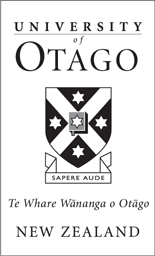Megan Anakin (UOCE)
Over the last two years, several teaching teams at the University of Otago College of Education have been exploring alternatives to the use of the lecture format for teaching large courses. These teams have been exploring ways to flip their university classrooms. “[F]lipping describes the inversion of expectations in the traditional college lecture. It takes many forms, including interactive engagement, just-in-time teaching…and peer instruction” (Berrett, 2012, p.1). To change expectations in our classrooms, we replaced lectures with video clips and implemented structured learning activities during our tutorial time to increase student interaction and achievement (Huston & Lin, 2012; Tucker, 2012). While the idea that students are expected to be active and engaged participants in the learning process rather than passive recipients of information is not new, higher education has been slow to develop effective teaching practices to support teaching teams who want to flip their large courses (Berrett, 2012). While exploring new technology and practice at such a large scale is not without pitfalls, the benefits we have experienced outweigh those costs (van der Meer & Anakin, 2013). This workshop will feature the teaching strategies we have designed to help students to understand the course content, ease first-year students’ transition into the university setting, promote the University of Otago’s graduate attributes, and demonstrate congruent teaching (Poulson-Genge & Paris, 2013).
Workshop structure and activities
During this interactive session, participants will experience a set of inter-linked teaching and learning strategies that were used in the flipped classrooms of a large first year undergraduate course during the first semester of 2013. First, participants will surface prior knowledge about a topic using a collaborative summarising strategy. Secondly, participants will use an active reading and note-taking strategy to help them process new information. Finally, participants will apply and evaluate their understandings by generating criteria, giving and receiving peer-feedback, reflecting on their progress, and setting goals for their next steps of learning.
References
Berrett, D. (2012). How ‘flipping’ the classroom can improve the traditional lecture. The Chronicle of Higher Education, 12. Retrieved August 7, 2013, from http://chronicle.com/article/How-Flipping-the-Classroom/130857/
Houston, M., & Lin, L. (2012, March). Humanizing the classroom by flipping the homework versus lecture equation. In P. Resta (Ed.), Proceedings of Society for Information Technology & Teacher Education International Conference 2012 (pp. 1177-1182). Chesapeake, VA: AACE.
Polson-Genge, A., & Paris, J. (2013). Congruent teaching. Akoranga, 9, 9-11.
Tucker, B. (2012). The flipped classroom. Education Next, 12(1), 82-83.
Van der Meer, J., & Anakin, M. (2013). Students’ perceptions of mobile-bite sized learning. Paper presented at 18th Biennial Conference of the Australasian Human Development Association (AHDA), July 1-4, Queensland, Australia.

